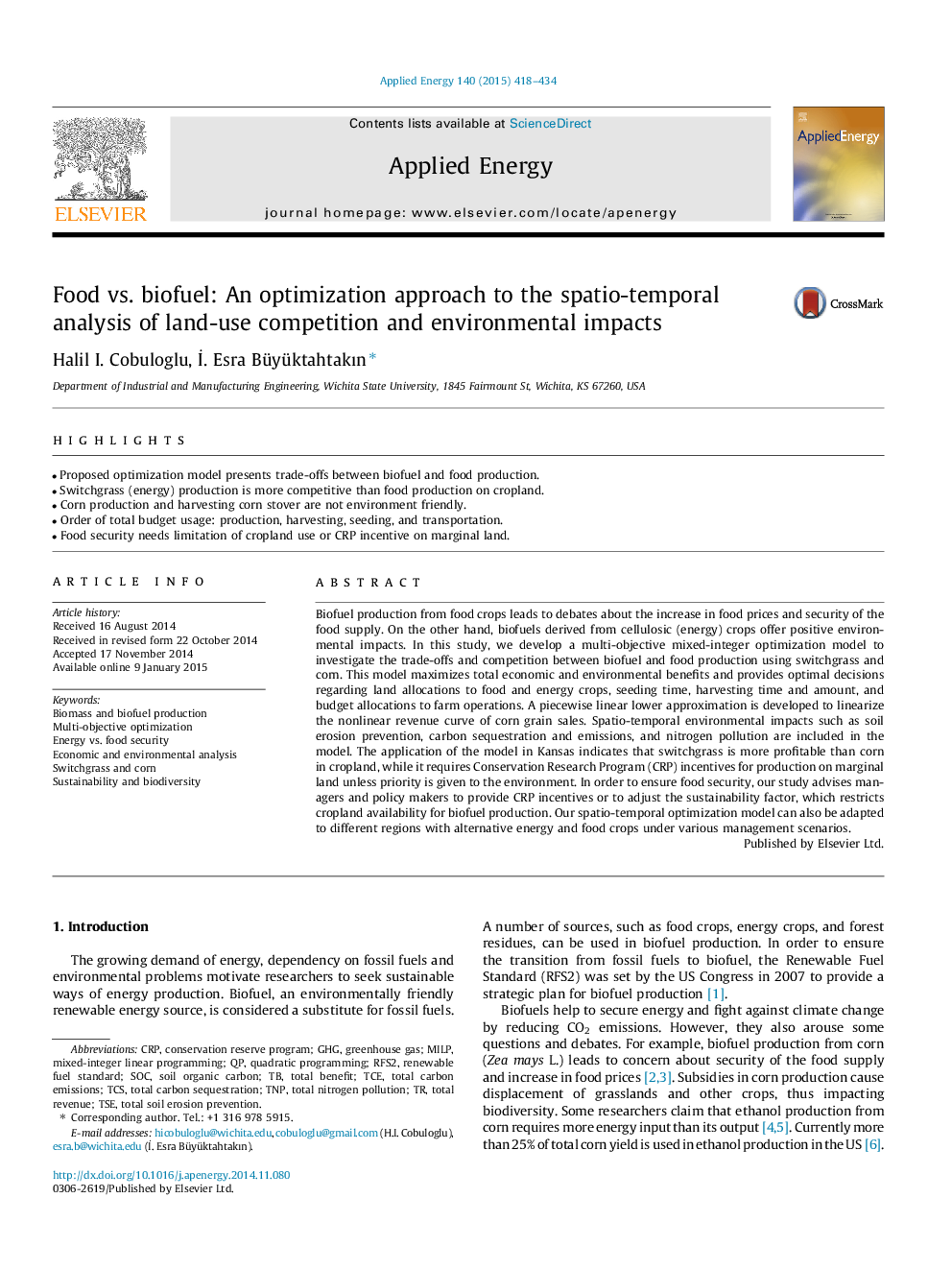| Article ID | Journal | Published Year | Pages | File Type |
|---|---|---|---|---|
| 6688072 | Applied Energy | 2015 | 17 Pages |
Abstract
Biofuel production from food crops leads to debates about the increase in food prices and security of the food supply. On the other hand, biofuels derived from cellulosic (energy) crops offer positive environmental impacts. In this study, we develop a multi-objective mixed-integer optimization model to investigate the trade-offs and competition between biofuel and food production using switchgrass and corn. This model maximizes total economic and environmental benefits and provides optimal decisions regarding land allocations to food and energy crops, seeding time, harvesting time and amount, and budget allocations to farm operations. A piecewise linear lower approximation is developed to linearize the nonlinear revenue curve of corn grain sales. Spatio-temporal environmental impacts such as soil erosion prevention, carbon sequestration and emissions, and nitrogen pollution are included in the model. The application of the model in Kansas indicates that switchgrass is more profitable than corn in cropland, while it requires Conservation Research Program (CRP) incentives for production on marginal land unless priority is given to the environment. In order to ensure food security, our study advises managers and policy makers to provide CRP incentives or to adjust the sustainability factor, which restricts cropland availability for biofuel production. Our spatio-temporal optimization model can also be adapted to different regions with alternative energy and food crops under various management scenarios.
Keywords
Related Topics
Physical Sciences and Engineering
Energy
Energy Engineering and Power Technology
Authors
Halil I. Cobuloglu, Ä°. Esra Büyüktahtakın,
